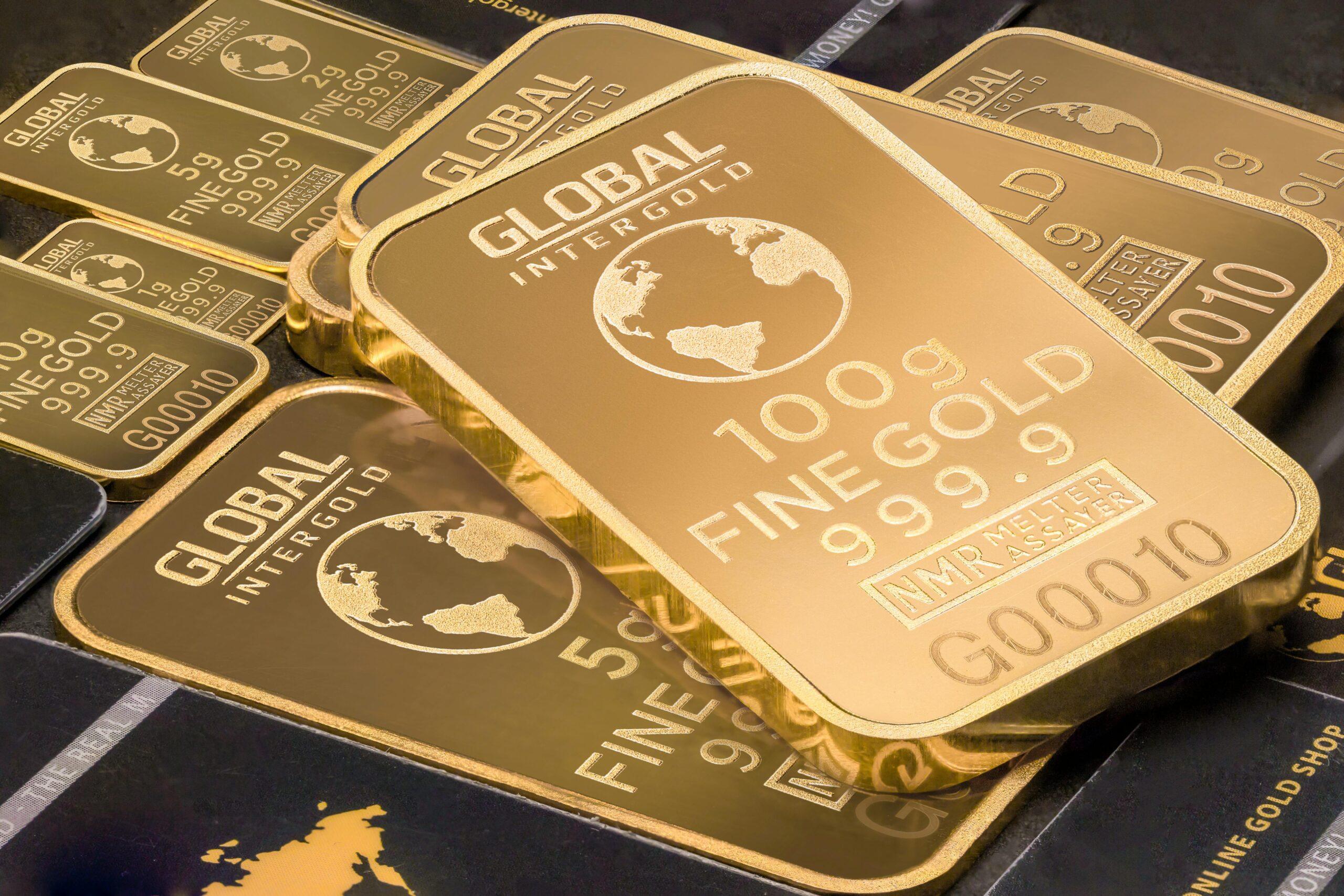Why Invest in Gold?
Gold offers a hedge against inflation, currency devaluation, and economic instability. It’s a tangible asset that maintains value over time, making it an attractive option for diversifying your investment portfolio. Gold also tends to perform well during periods of economic uncertainty, providing stability when other assets, like stocks, may be volatile.
Types of Gold Investments
Gold can be invested in through various methods, each with its unique benefits and risks. The main types include:
1. Physical Gold
Physical gold, in the form of coins or bars, allows investors to own the tangible asset itself. This form of gold investment is popular with those seeking a direct hedge against inflation and economic uncertainty.
2. Gold ETFs
Gold Exchange-Traded Funds (ETFs) track the price of gold and trade on stock exchanges. They allow investors to gain exposure to gold without holding physical assets, offering a liquid and cost-effective option.
3. Gold Mining Stocks
Investing in gold mining companies allows investors to gain exposure to gold without directly purchasing it. Gold mining stocks can be more volatile than physical gold, but they offer the potential for higher returns.
4. Gold Mutual Funds
Gold mutual funds invest in a portfolio of gold-related assets, including mining stocks, gold ETFs, and even physical gold. They provide diversification within the gold sector, spreading out risk across multiple assets.
5. Gold Futures and Options
Gold futures and options are contracts that allow investors to speculate on the future price of gold. These instruments are complex and better suited for experienced investors, as they carry high risk but also the potential for high rewards.
Benefits of Investing in Gold
- Inflation Hedge: Gold retains its purchasing power, making it a reliable hedge against inflation.
- Diversification: Gold can reduce risk in a portfolio by balancing out other assets.
- Safe-Haven Asset: Gold often performs well during economic downturns, offering stability when stocks are volatile.
- Tangible Asset: Physical gold provides direct ownership and security, as it’s a tangible asset that isn’t dependent on financial institutions.
Risks Associated with Gold Investments
- Market Volatility: Although generally stable, gold prices can fluctuate based on global economic events.
- Storage Costs: Physical gold requires secure storage, which can add to the cost.
- Lack of Income: Gold doesn’t generate dividends or interest, so it doesn’t provide income like stocks or bonds.
- Liquidity Issues: Selling large amounts of physical gold can take time and may require a broker or dealer.
How to Start Investing in Gold
1. Setting Investment Goals
Before investing in gold, define your goals. Are you looking for long-term growth, a hedge against inflation, or simply diversification? Understanding your objectives will help you select the right type of gold investment.
2. Choosing the Right Type of Gold Investment
Each type of gold investment has unique benefits. Physical gold offers tangible security, while ETFs and stocks provide liquidity. Choose based on your risk tolerance, investment goals, and the amount you plan to invest.
Understanding Physical Gold Investment Options
Gold Bullion and Coins
Gold bullion and coins are popular forms of physical gold investments. Bullion typically refers to larger bars, while coins are smaller and more versatile. Coins are often favored for their ease of storage and liquidity.
Storage Considerations
Storing physical gold can be challenging. You’ll need secure storage, such as a safe deposit box or a secure vault, to protect against theft or damage. Insurance can also add another layer of security.
Investing in Gold ETFs
Gold ETFs are a convenient way to gain exposure to gold without the need for storage. They offer liquidity, low transaction costs, and are traded on stock exchanges. However, they carry management fees, so consider these costs before investing.
Investing in Gold Mining Stocks and Mutual Funds
Gold mining stocks and mutual funds provide an alternative way to invest in gold. Mining stocks are tied to the performance of individual companies, making them more volatile than physical gold. Mutual funds, however, spread risk by investing in a diversified portfolio of gold-related assets.
Understanding Gold Futures and Options
Gold futures and options allow investors to speculate on the future price of gold. These contracts are complex and can carry significant risk, so they’re generally best suited for experienced investors. Futures and options can offer high returns but also lead to substantial losses.
Comparing Gold with Other Precious Metals
While gold is the most popular precious metal, other metals like silver, platinum, and palladium also have investment appeal. Silver is known for industrial applications, platinum and palladium are used in automotive production, and each has different price drivers and risks. Diversifying with other metals can add further protection to a portfolio.
How to Diversify with Gold in Your Portfolio
Including gold in a diversified portfolio can reduce risk by offsetting the volatility of stocks and bonds. Most experts recommend allocating 5-10% of your portfolio to gold for balanced diversification, but this varies based on individual financial goals and market conditions.
Factors That Affect Gold Prices
Gold prices are influenced by various factors, including:
- Inflation Rates: High inflation often drives up gold prices as investors seek a stable asset.
- Economic Uncertainty: During economic downturns, gold typically performs well as a safe-haven asset.
- Currency Fluctuations: When the U.S. dollar weakens, gold prices often rise, and vice versa.
- Interest Rates: Lower interest rates make gold more attractive as it doesn’t pay interest or dividends.
Long-Term Gold Investment Strategies
- Buy and Hold: Physical gold is often held long-term as a hedge against inflation and economic instability.
- Dollar-Cost Averaging: By purchasing gold at regular intervals, investors can reduce the impact of price fluctuations.
- Combine with Other Assets: Balancing gold with stocks, bonds, and other investments can enhance overall portfolio stability.
Common Mistakes to Avoid When Investing in Gold
- Failing to Diversify: Putting all your assets in gold can limit growth potential.
- Ignoring Costs: Gold investments, particularly physical gold, come with additional fees for storage and insurance.
- Overtrading: Frequently buying and selling gold can lead to high transaction costs and reduce returns.
- Neglecting Research: Ensure you understand the type of gold investment and its associated risks before investing.
Conclusion: Building Wealth Through Gold Investment
Gold is a versatile investment that provides stability, diversification, and a hedge against inflation. By understanding the types of gold investments available and choosing the right strategy, you can build a solid foundation for long-term wealth. While it’s important to consider the risks and costs, gold remains an essential component for those looking to safeguard their portfolios against economic uncertainty.
FAQs
- Is gold a good long-term investment?
Yes, gold is often considered a good long-term investment for preserving wealth and protecting against inflation. - What percentage of my portfolio should be in gold?
Most experts recommend allocating 5-10% of your portfolio to gold for balanced diversification. - How can I buy gold without physical storage concerns?
Gold ETFs or gold mining stocks provide exposure to gold without the need for physical storage. - Does gold generate income?
No, gold doesn’t pay dividends or interest, so it’s generally held for capital preservation rather than income. - Are gold ETFs safe?
Yes, gold ETFs are considered a safe and liquid option for investing in gold, though they carry management fees and market-related risks.
Also read: Key Factors Influencing Gold Prices




